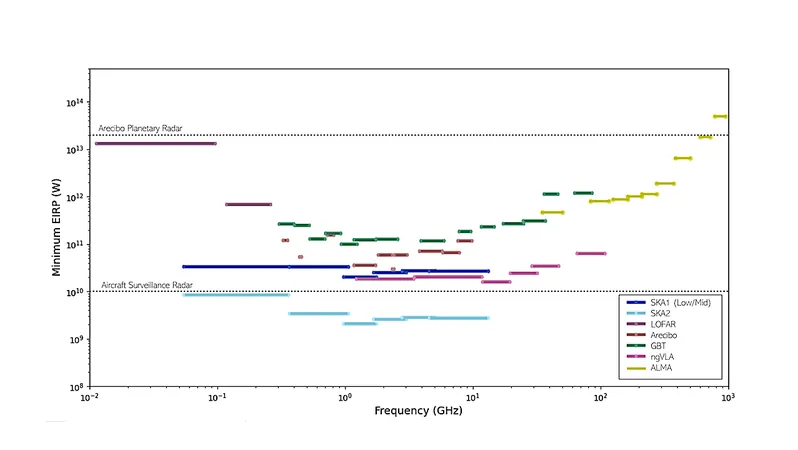
Unveiling Alien Signals: ALMA's Groundbreaking SETI Exploration
2024-12-02
Author: Nur
Introduction to ALMA and SETI
The Atacama Millimeter/Submillimeter Array (ALMA) stands as a titan of sensitivity in the realm of radio astronomy, particularly impressive at frequencies exceeding 35 GHz. This remarkable facility is now at the forefront of new endeavors in the Search for Extraterrestrial Intelligence (SETI), as researchers explore its capabilities for detecting potential narrowband technosignatures—indicators of advanced extraterrestrial technology.
The Pioneering Study
In a pioneering study, scientists utilized archival ALMA data to conduct a technosignature survey focusing on two critical spectral windows centered at 90.642 GHz and 93.151 GHz. By examining 28 carefully selected stars from the Gaia DR3 catalogue, the research team aimed to establish new limits on the presence of extraterrestrial transmitters, marking a significant advancement in the field of astrobiology.
Research Methodology
Utilizing a stellar 'bycatch' sampling technique, the researchers concentrated their efforts within the undistorted field of view covered by four ALMA calibrators. Remarkably, for the closest star in their observation, evidence of transmitters was conspicuously absent, with the minimum effective isotropic radiated power (EIRP_min) threshold set at over 7 x 10^17 watts. This groundbreaking investigation is noteworthy as it marks the inaugural technosignature search executed using ALMA's versatile data collection capabilities.
Comparative Analysis
The findings draw a compelling comparison to other SETI surveys conducted at frequencies above 1 GHz, all while contextualizing EIRP limits for both Arecibo's planetary radar and the theoretical power output of a Kardashev Type I civilization. The researchers proposed a 'Terra Incognito' limit—illustrated by a slanted gray line—that challenges current limitations of telescopes and the extent of surveys conducted thus far, prompting further exploration in the quest for extraterrestrial signals.
Conclusion
As the scientific community delves deeper into the possibilities of detecting alien communication, instruments like ALMA are poised to redefine the boundaries of our search for life beyond Earth. This study not only signifies a leap forward in technosignature detection but also rekindles hope for groundbreaking discoveries in the vast cosmos.
Stay Tuned
Stay tuned as we continue to follow the latest investigations that might just bring us closer to answering the timeless question: Are we alone in the universe?




 Brasil (PT)
Brasil (PT)
 Canada (EN)
Canada (EN)
 Chile (ES)
Chile (ES)
 España (ES)
España (ES)
 France (FR)
France (FR)
 Hong Kong (EN)
Hong Kong (EN)
 Italia (IT)
Italia (IT)
 日本 (JA)
日本 (JA)
 Magyarország (HU)
Magyarország (HU)
 Norge (NO)
Norge (NO)
 Polska (PL)
Polska (PL)
 Schweiz (DE)
Schweiz (DE)
 Singapore (EN)
Singapore (EN)
 Sverige (SV)
Sverige (SV)
 Suomi (FI)
Suomi (FI)
 Türkiye (TR)
Türkiye (TR)